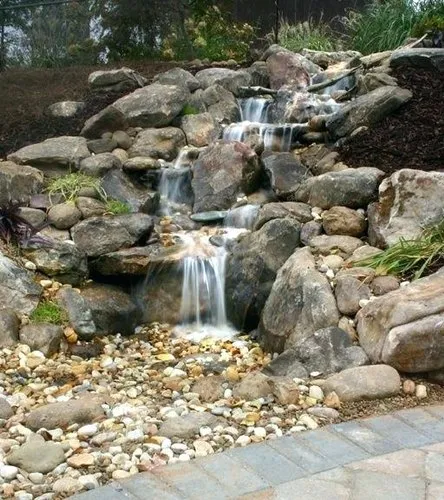The Art of Building a Natural Water Feature
- Shane Rahimian
- Sep 12, 2023
- 3 min read
Water features have an enchanting quality that can transform any outdoor space into a peaceful oasis. From serene ponds to babbling brooks, the art of building a natural water feature is a wonderful way to enhance the beauty and tranquility of your garden or landscape. In this blog post, we will explore the steps involved in creating your very own natural water feature.
Step 1: Design and Planning
Before you start digging or buying materials, take the time to envision your ideal water feature. Consider the size, shape, and style that best suits your space and personal preferences. Think about whether you want a pond, waterfall, stream, or a combination of these elements.
Sketch out your design and plan the layout. Take into account the natural topography of your land, as this will influence the flow of water and the overall aesthetics.
Step 2: Choosing the Right Location
Selecting the right location for your water feature is crucial. It should blend harmoniously with your existing landscape, receive the appropriate amount of sunlight, and be easily accessible for maintenance. Ensure there are no underground utilities or structures that could hinder your construction.
Consider how the water feature will fit into the overall flow and design of your garden. A well-placed water feature can serve as a focal point, drawing attention and creating a sense of serenity.
Step 3: Gathering Materials
The materials you choose will play a significant role in achieving the natural look and feel of your water feature. Natural stones, rocks, and gravel are often used to create the surrounding structure. Select plants that are native to your region and thrive in aquatic environments. Don't forget to invest in a reliable water pump and filtration system to maintain water quality.
Step 4: Digging and Shaping
Once you've planned your design and gathered materials, it's time to start digging. Excavate the area according to your design, creating the desired depth for your pond or stream. Use the excavated soil to shape the landscape around the water feature, creating gentle slopes and boulders to mimic a natural setting.
Step 5: Lining and Edging
To prevent water from seeping into the ground, line your water feature with a sturdy pond liner or waterproof material. Then, carefully arrange the stones and rocks to create the edges and shorelines. Make sure the edges blend seamlessly with the surrounding landscape.
Step 6: Installing the Pump and Filtration System
Install the water pump and filtration system.These components are crucial for maintaining water clarity and circulation. Consider concealing the equipment with strategically placed rocks
or vegetation to preserve the natural look of the feature.
Step 7: Planting and Finishing Touches
Choose aquatic plants that not only add aesthetic appeal but also help maintain water quality. Native water lilies, lotus, and cattails are popular choices. Plant them in appropriate locations within your water feature.
To enhance the natural ambiance, add driftwood, stones, or other decorative elements that mimic the beauty of nature. Consider installing underwater lighting to enjoy your water feature after dark.
Conclusion
Building a natural water feature is an art that involves careful planning, creative design, and a love for nature. When done right, it can provide a serene escape in your own backyard, attracting wildlife and soothing your senses with the sound of flowing water. Whether you're a seasoned landscaper or a novice gardener, creating a natural water feature can be a rewarding and fulfilling project that brings beauty and tranquility to your outdoor space. So, roll up your sleeves, unleash your creativity, and let the art of building a natural water feature begin! If you would like our help in designing and constructing you dream water feature then dont hestitate to get in touch!


























Comments